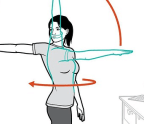
Have questions about diabetes? You’ve come to the right place! This primer contains information about all the basics of the condition.
Diabetes overview
Diabetes is a condition in which blood glucose (sugar) is too high. The body uses glucose from food as a source of energy, much like a car uses gasoline for fuel. Insulin, a hormone that is made in the pancreas, moves glucose from the bloodstream into cells to be used for energy. When you have diabetes, your body either doesn’t make enough insulin (or stops making insulin altogether) or doesn’t use its own insulin as well as it should. As a result, glucose builds up in the blood and can’t get into cells to be used for energy.
Diabetes causes
There are various types of diabetes. Type 1 and type 2 diabetes account for the vast majority of diabetes cases. Type 1 diabetes occurs when the immune system attacks and destroys the cells in the pancreas that make insulin (called beta cells). The exact cause of type 1 diabetes isn’t known, but scientists think that genes or environmental factors, such as viruses, could be responsible.
Type 2 diabetes is also caused by genes, as well as lifestyle factors, such as being overweight and not getting enough physical activity. The good news is that type 2 diabetes can be prevented by losing between 5% and 10% of your body weight (if you are overweight) and aiming to get at least 150 minutes of moderate physical activity each week.
Who gets diabetes?
More than 37 million Americans (about one in 10) have diabetes. Anyone at any age can get either type 1 or type 2 diabetes. Type 1 diabetes accounts for about 5% of cases of diabetes. However, type 1 diabetes usually appears during childhood or adolescence. But again, adults get type




